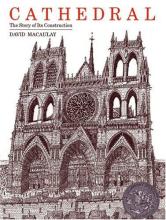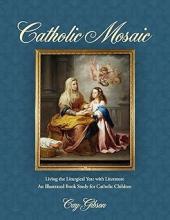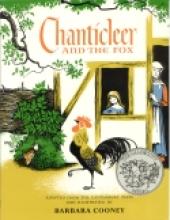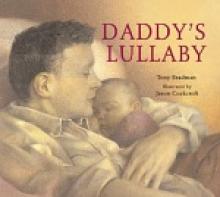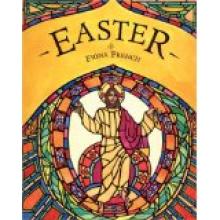Picture Books
Cathedral
An interesting, fully illustrated (with pen and ink drawings) story of the construction of a Medieval Cathedral. The cathedral in the book and the details of the story are fictional, but are based on details of what we know about the construction of real-life cathedrals. (Among other reasons, this technique makes sense because there probably aren't enough details known about the construction of any one Cathedral to make a book of this sort). In addition to scientific, artistic and architectural details about how flying buttresses work and other technical information, the author provides a glimpse into this significant aspect of Medieval life – how dedicated the townspeople were to the project, how many of those who started the project did not live to its completion (because it took so many years to build), difficulties that would come up in the midst of the construction, etc.
From what he has portrayed in this book, I believe that David Macaulay is trying to be fair to the Church. Unfortunately, there is one significant error with regard to Church teaching – on the first page. The problematic portion reads: "A new cathedral would offer a worthy resting place for the sacred remains of Saint Germain, a knight of the First Crusade whose skull and forefinger had later been sent back from Constantinople by Louis IX. Such relics as these were worshipped by people throughout Europe." I don't think that this error makes the book unusable, but parents should be certain that their children understand that Catholics are not permitted to worship saints relics, statues, images or any other thing or mere human. Worship is reserved for God alone (the Father, Son and Holy Spirit). We pray to the Saints and to Our Lady only to ask them to pray and intercede for us because they are so close to God. Statues, images, relics and other sacramentals are not worshipped, but reverenced and venerated (treated with great respect, cherished and even devoutly kissed – even as we may kiss another person or the image of a dead beloved one) because they remind us of God or those who are close to God.
Catholic Mosaic – Living the Liturgical Year with Literature
The title clearly explains what this book is all about: Gibson took the twelve months of the year, wove in the liturgical celebrations and linked these to marvelous picture books – creating a mosaic of Catholic culture and beautiful literature.
But this book is much more than an annotated book list, although that is included too. Gibson gives suggested questions for you to discuss with your children. She gives suggested copywork – that is, quotes that children memorize or use for handwriting practice. She gives ideas for activities that will reinforce the meaning of the particular book. She helps families to truly live and embrace the wondrous Catholic traditions connected to feast days, liturgical celebrations and other things Catholic.
Some of the books described and linked in this book are Catholic illustrated classics – books like The Weight of a Mass by Josephine Nobisso, Song of the Swallows by Leo Politi and St. George and the Dragon by Margaret Hodges are extremely popular with many Catholic parents and children. But Gibson goes beyond the “Catholic classics” and mentions books like The Little Match Girl by Hans Christian Andersen (illustrated by Rachel Isadora) and The Giving Tree by Shel Silverstein and how you can apply Catholic teachings to these books, giving your children a rich and lasting understanding of our Catholic culture.
In total, Gibson integrates FIFTY-TWO illustrated children’s books with the Catholic calendar and Catholic living. Books that cover the Mass, First Communion, various saints and important liturgical seasons are included. In addition, she suggests other books which may also work (but omits questions and activities linked to these “second-string” books some of which unfortunately are out-of-print or hard-to-find).
All the primary books are easily attainable from booksellers; in addition, books by popular authors like Tomie dePaola are usually available at public libraries so as not to strain your book budget too much. However, after seeing these books, you might want to have good copies for your home library. Gibson has selected books not only for the meaning in their words, but also for the beauty of their illustrations. These books could easily be used as an art study in conjunction with the literature, religion and other subjects covered in these books.
Further resources that Gibson gives the reader are suggestions for creating and maintaining a “Liturgical Notebook” throughout the year – a memory scrapbook of this literature-based journey – as well as incorporating some of the traditional Catholic homeschool resources (for example, CHC’s A Year with God or Seton’s Art 1).
Run, don’t walk, to get a copy of this book. I know I sound effusive, but this book is remarkable in its ambitious objective which is stunningly successful. This is one of those homeschooling volumes that needs to be on every Catholic resource shelf – that is, when it’s not being used!
Chanticleer and the Fox
Close to the Wind
Cookies: Bite-Size Life Lessons
Daddy's Lullaby
Do Re Mi
A dear blog reader recommended this picture book on the life of Guido d'Arezzo, the Benedictine monk who came up with the system for writing music one thousand years ago–the same system we still use today. I requested it via inter library loan since our library does not own the title.
I liked the way the life of the monks is described, but I wonder about the illustrations... in the book the monks look more like Dominicans in white habit... Honestly, my wish is for the book to be re-ilustrated by another artist! Still, a very nice cultural picture book and... you may not mind the style of the illustrations!

